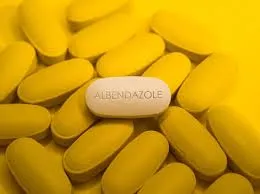- Afrikaans
- Albanian
- Amharic
- Arabic
- Armenian
- Azerbaijani
- Basque
- Belarusian
- Bengali
- Bosnian
- Bulgarian
- Catalan
- Cebuano
- Corsican
- Croatian
- Czech
- Danish
- Dutch
- English
- Esperanto
- Estonian
- Finnish
- French
- Frisian
- Galician
- Georgian
- German
- Greek
- Gujarati
- Haitian Creole
- hausa
- hawaiian
- Hebrew
- Hindi
- Miao
- Hungarian
- Icelandic
- igbo
- Indonesian
- irish
- Italian
- Japanese
- Javanese
- Kannada
- kazakh
- Khmer
- Rwandese
- Korean
- Kurdish
- Kyrgyz
- Lao
- Latin
- Latvian
- Lithuanian
- Luxembourgish
- Macedonian
- Malgashi
- Malay
- Malayalam
- Maltese
- Maori
- Marathi
- Mongolian
- Myanmar
- Nepali
- Norwegian
- Norwegian
- Occitan
- Pashto
- Persian
- Polish
- Portuguese
- Punjabi
- Romanian
- Russian
- Samoan
- Scottish Gaelic
- Serbian
- Sesotho
- Shona
- Sindhi
- Sinhala
- Slovak
- Slovenian
- Somali
- Spanish
- Sundanese
- Swahili
- Swedish
- Tagalog
- Tajik
- Tamil
- Tatar
- Telugu
- Thai
- Turkish
- Turkmen
- Ukrainian
- Urdu
- Uighur
- Uzbek
- Vietnamese
- Welsh
- Bantu
- Yiddish
- Yoruba
- Zulu
Nov . 22, 2024 09:16 Back to list
veterinary disinfectant
The Importance of Veterinary Disinfectants in Animal Care and Disease Prevention
Veterinary disinfectants play a crucial role in maintaining the health and well-being of animals in various settings, including farms, veterinary clinics, and animal shelters. The use of effective disinfectants is essential not only for controlling pathogens that can lead to disease but also for ensuring a safe environment for both animals and humans. This article will delve into the significance of veterinary disinfectants, the types available, and best practices for their use in veterinary medicine.
Understanding Pathogens and Their Risks
Animals can be carriers of various pathogens, including bacteria, viruses, fungi, and parasites. These microorganisms can reside in the environment, on surfaces, or within the animals themselves. Inadequate sanitation can lead to outbreaks of infectious diseases, which may spread rapidly among susceptible populations. Examples include Parvovirus in dogs, Feline Leukemia Virus in cats, and various zoonotic diseases that can also pose risks to human health.
Disinfectants are formulated to eliminate these harmful microorganisms from surfaces, equipment, and instrumentation, significantly reducing the risk of infection. Regular and thorough disinfection helps prevent the transmission of diseases, particularly in multi-animal facilities where the density of animals can increase the probability of outbreaks.
Types of Veterinary Disinfectants
There are several categories of veterinary disinfectants, each effective against specific types of pathogens. Common types include
1. Quaternary Ammonium Compounds (Quats) These are popular for their broad-spectrum antimicrobial activity and safety for use around animals. They are effective against many bacteria and some viruses but may not be as effective against protozoa or spores.
2. Alcohols Isopropyl and ethyl alcohol are effective against bacteria and many viruses but are less effective against certain spores and can be flammable. They are commonly used for hand sanitization and equipment disinfection.
3. Chlorine Compounds Sodium hypochlorite (bleach) is a potent disinfectant capable of eliminating a wide range of pathogens, including bacteria, viruses, and fungi. However, it can be corrosive and must be properly diluted to avoid damaging surfaces or harming animals.
veterinary disinfectant

4. Hydrogen Peroxide It is a strong oxidizer that can kill a wide range of pathogens. It breaks down into water and oxygen, making it an environmentally friendly option. However, it may require longer contact times to be effective.
5. Phenolic Compounds These are used in veterinary settings for their residual activity and effectiveness against a comprehensive range of pathogens, including bacteria, viruses, and fungi. However, they might be toxic to certain animals, necessitating careful handling.
Best Practices for Disinfection
To maximize the effectiveness of veterinary disinfectants, practitioners should follow best practices, including
- Thorough Cleaning Disinfectants are most effective on clean surfaces. Removing organic matter, dirt, and debris is a critical first step before applying any disinfectant.
- Proper Dilution and Application Always adhere to manufacturer instructions for dilution rates and contact times to ensure efficacy and safety.
- Regular Monitoring Establish schedules for routine disinfection, especially in high-traffic areas within veterinary clinics or shelters.
- Training Staff Ensure that all staff members are knowledgeable about the correct procedures for cleaning and disinfecting to promote a culture of hygiene within the facility.
In conclusion, veterinary disinfectants are an indispensable part of animal care, playing a critical role in preventing disease transmission and promoting overall health in both animals and humans. By understanding their importance and implementing best practices, veterinary professionals can create safer environments conducive to the well-being of every animal in their care.
-
Guide to Oxytetracycline Injection
NewsMar.27,2025
-
Guide to Colistin Sulphate
NewsMar.27,2025
-
Gentamicin Sulfate: Uses, Price, And Key Information
NewsMar.27,2025
-
Enrofloxacin Injection: Uses, Price, And Supplier Information
NewsMar.27,2025
-
Dexamethasone Sodium Phosphate Injection: Uses, Price, And Key Information
NewsMar.27,2025
-
Albendazole Tablet: Uses, Dosage, Cost, And Key Information
NewsMar.27,2025













